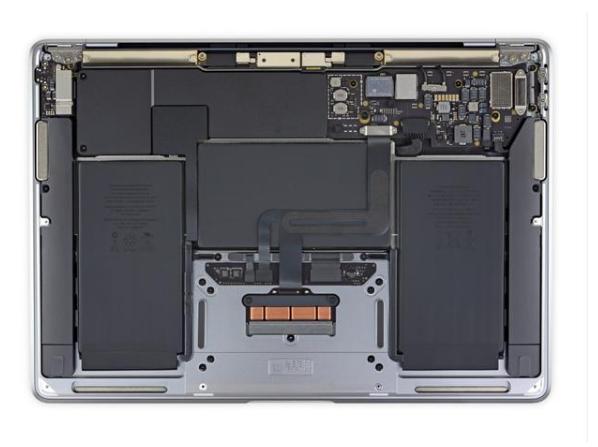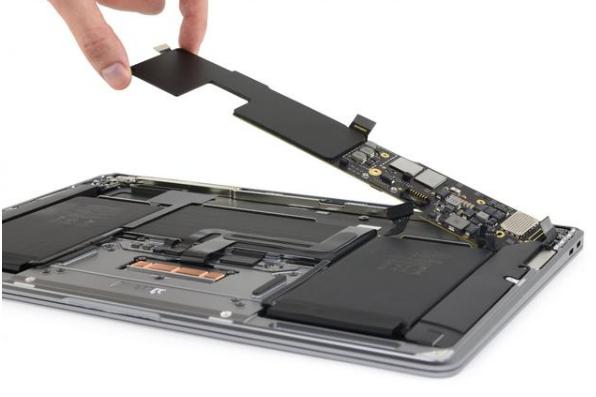Apple has released the new ARM version MAC with M1 chip. This has been stirring the hearts of countless Apple fans. They are eager to replace their machines. The major mainstream media and Internet opinion leaders release their introductions of tryout and evaluation. Including M1 chip performance, software ecology of MAC OS big sur etc. Today, we'll disassemble the latest 13-inch Macbook Pro with M1 chip. Let’s see what's inside this performance monster!
First: open the bottom back with a suction cup. Then peak one side of the cover with a teardown piece. Finally, pull out the whole D side backboard from the bottom side. Note: Since the Macbook Pro backboard is pinned, it needs to be pulled from the bottom side.

Compared with Intel MacBook Air, the upper left fan of M1 MacBook Air is removed. It’s the biggest feature. Considering the low heat of M1 chip, so it doesn’t need overheat frequency reduction in normal use. But the geekbench multi-core test showed that the MacBook Air cannot operate at full capacity because of the poor heat dissipation. M1 chip is covered with a large heat sink.
Apart from the new motherboard and heat sink, the internal design of MacBook Air is almost identical to previous products.
But the fan-free design is a bit "crude". This scheme may make MacBook Air cooling longer. When you use it, it will keep getting hot, and the durability and performance will be no guarantee.
As for MacBook Pro, the appearance has barely changed from previous models. This means that some parts can be used in common with older products. This greatly reduces the cost of maintenance.
Let’s look at the most concerned appearance of Apple M1 chip. It seems that the head cover of the processor has been cut in half. On the right is the "Unified Memory" of Apple. The A12Z and A12X in iPad are encapsulated in the same way. This makes the memory latency reduced, but later replacement is impossible. Users who want to choose an 8GB memory version are advised to think twice before buying. The memory is LPDDR4x and 4266MHz of Hynix. M1 has encryption and security functions. So previous T2 chip on the MacBook series has been removed on the new MacBook.

The A14 bionic processors in Apple M1 SoC and iPhone 12 series are homologous. They both have four high performance cores, four energy efficient cores and 8-core GPU. The self-developed chip M1 processor of Apple uses a 5nm manufacture procedure. There are 16 billion transistors integrated inside. Compared with its predecessor, Mac series products with M1 chip has several advantages. The performance improved by 3.5 times, GPU performance by up to 6 times, and machine learning speed by up to 15 times.
With the same design as A12X on iPad pro, this time Apple M1 chip directly integrates memory into the chip. Such a design means that the user will hardly be able to upgrade and replace the memory themselves. Users who buy Macbooks should have good psychological expectations. If they start with a small memory purchase, they can only by purchasing a new MacBook later to solve it.